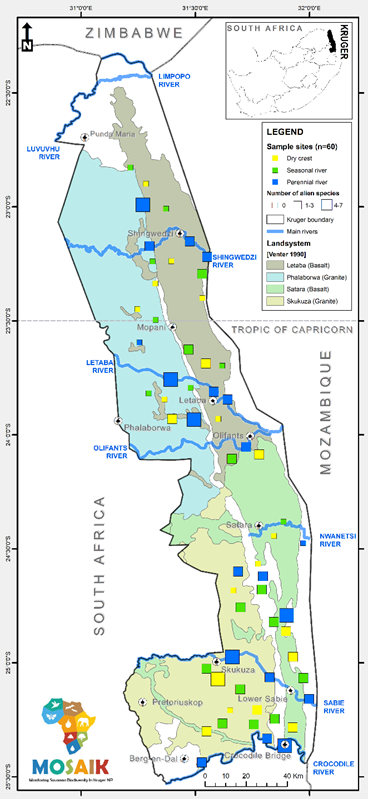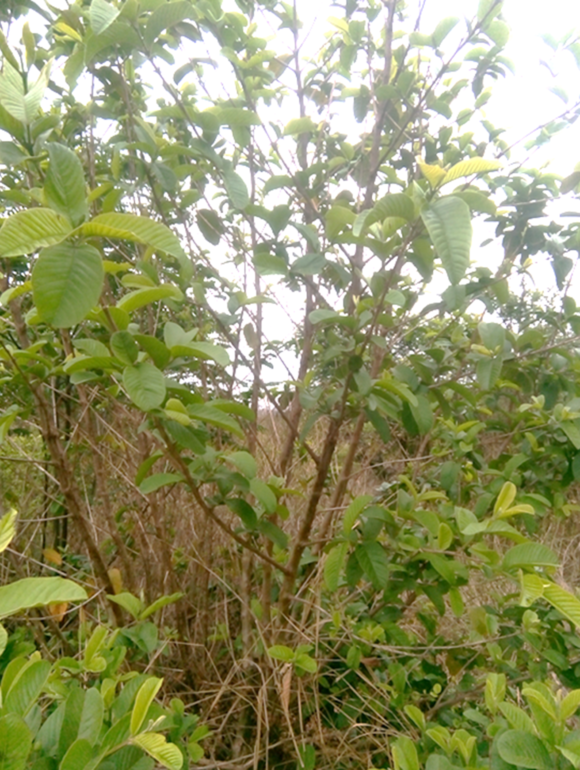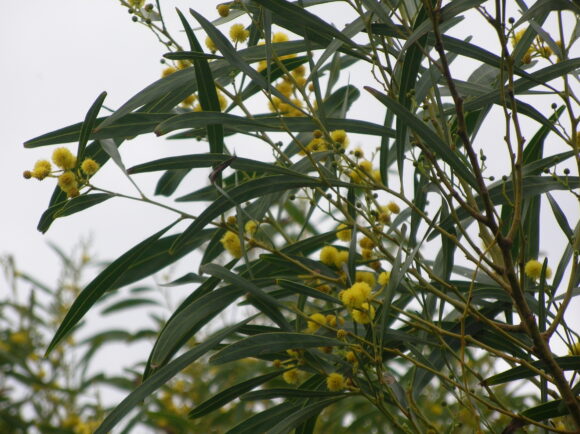17 November 2020 | By Llewellyn Foxcroft & Petr Pyšek
An intensive biodiversity assessment in the Kruger National Park, South Africa, recorded 20 naturalised alien plant species, of which only four had previously been recognized as invasive, and one species represented a new introduction for the park. This is the finding of a large collaborative programme of Czech and South African researchers, led by Prof Petr Pyšek (Institute of Botany of the Czech Academy of Sciences and a C∙I∙B Research Associate), together with Dr Llewellyn Foxcroft (from SANParks and a core team member of the C∙I∙B, Stellenbosch University).
As part of the Monitoring Savanna Biodiversity in the Kruger National Park (MOSAIK) programme, 60 sampling sites were established across the park, in four different land systems and along primary or perennial rivers, major tributaries (seasonal rivers) and dry upland savanna areas. At each sampling site 50 × 50 m plots were surveyed for all plants, including naturalised and invasive alien species.

Being the first survey of alien species at this scale allowed for assessing species that had not yet been reported from these habitats. It also aimed to shed light on species that may not be as well-known or easy to identify, and therefore overlooked by control teams or in rapid surveys. Most invasive alien plant control takes place along the major rivers that originate from outside the park. Little is known about the invasion of large tributaries, and the upland savanna areas have mainly only received attention in areas where specific species are known to occur.
The most widespread species was coatbuttons or tridax daisy (Tridax procumbens), and one species, Spanish needles (Bidens bipinnata), was not previously reported from the park and represents a new record. The majority of aliens were concentrated along perennial rivers (60% of all occurrences), but some were repeatedly recorded at seasonal rivers as well and two of the most invasive species in KNP, sour prickly pear (Opuntia stricta) and famine weed (Parthenium hysterophorus), occurred also on dry crests away from water.
The results highlight the need for fine scale, intensive surveys for alien plants in KNP, not only along the main rivers, but in other areas that have been considered less at risk for being invaded. As the data also include abundance, follow-up surveys in the same plots after a few years will provide a good opportunity to determine if these alien species that are considered now to be naturalised, are persisting.
“Although the magnitude of invasions in the habitats we surveyed is rather low and alien species rarely reach a high cover, it is important to note that only one third of the plots were alien-species free, and that seasonal rivers harbour almost as many alien plants as perennial rivers, which indicates the potential of these plants to spread,” said Petr Pyšek.
“Recording new invasive species, as well as improving our information on alien species distribution and naturalised species, is an important step for developing management plans,” Llewellyn Foxcroft adds.
Read the paper
Pyšek P, Hejda M, Čuda J, Zambatis G, Pyšková K, MacFadyen S, Storch D, Tropek R, Foxcroft LC (2020) Into the great wide open: do alien plants spread from rivers to dry savanna in the Kruger National Park? NeoBiota 60: 61–77. https://doi.org/10.3897/neobiota.60.54608



